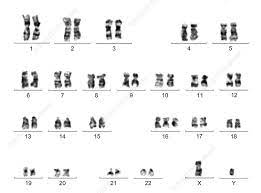 Trisomy 16 is a chromosomal abnormality in which there are 3 copies of chromosome 16 rather than two.
Trisomy 16 is a chromosomal abnormality in which there are 3 copies of chromosome 16 rather than two.
It is the most common trisomy leading to miscarriage and the second most common chromosomal cause of it, closely following X-chromosome monosomy.
About 6% of miscarriages have trisomy 16.
Those mostly occur between 8 and 15 weeks after the last menstrual period.
It is not possible for a child to be born alive with an extra copy of this chromosome present in all cells: full trisomy 16.
It is possible, however, for a child to be born alive with the mosaic form.
This chromosome represents almost 3% of all DNA in cells.
Women can be screened by chorionic villus sampling during pregnancy and amniocentesis to detect trisomy 16.
Prenatal screening with tests using Next Generation Sequencing can be utilized prior to invasive techniques.
Full trisomy 16 is incompatible with life and most of the time it results in miscarriage during the first trimester.
Mosaic trisomy 16, a rare chromosomal disorder, is compatible with life.
Mosaic trisomy 16 is associated with slow growth before birth.
A prenatal diagnosis the levels of trisomy in fetal-placental tissues can be analyzed.
With mosaic trisomy 16 pregnancies 66% result in live births with an average 35.7 weeks gestational age.
About 45% of infants with trisomy 16 have malformations.
The most common malformations are cardiac sympathetic denervation, ASD, and hypospadias.
